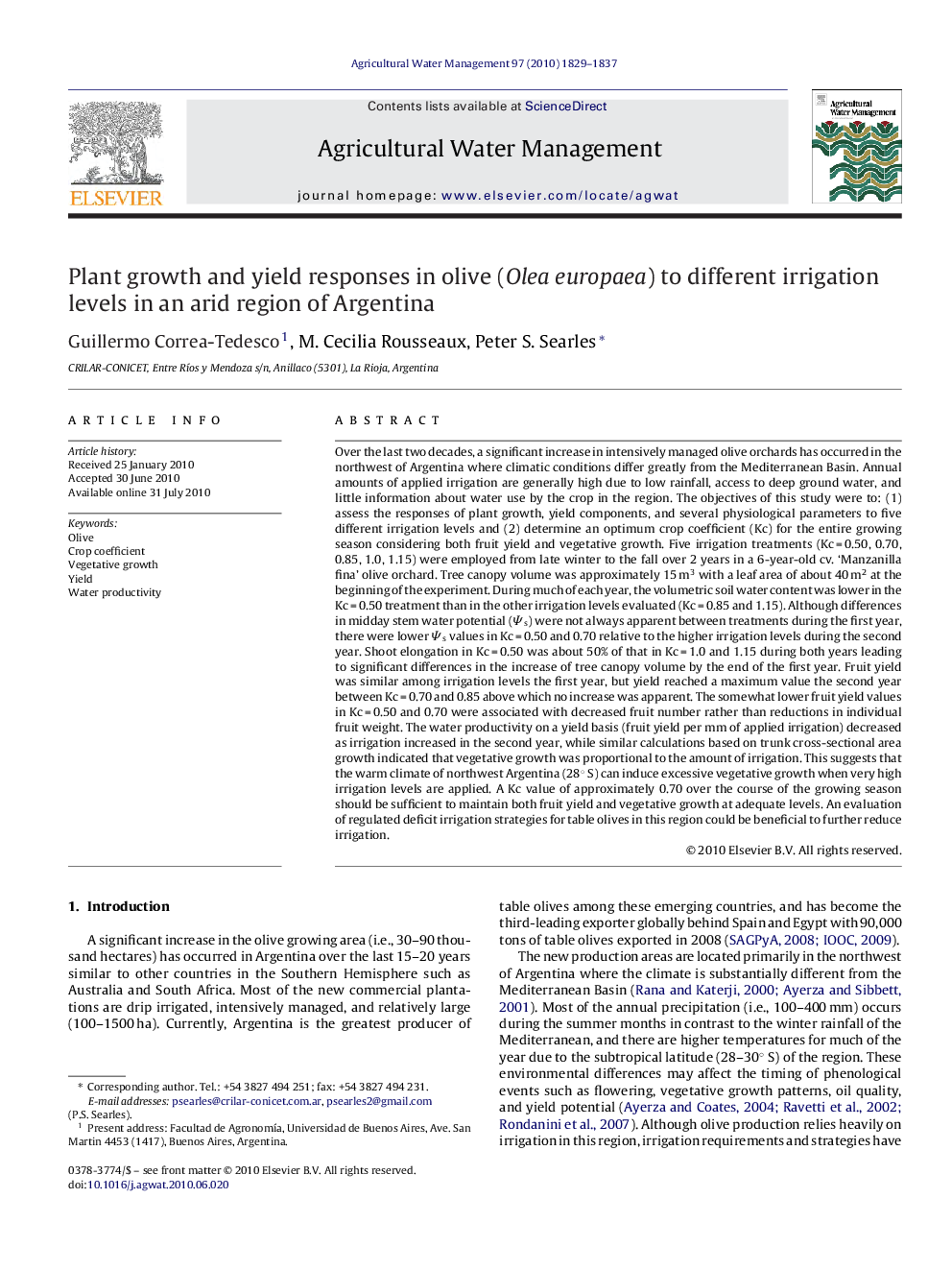| کد مقاله | کد نشریه | سال انتشار | مقاله انگلیسی | نسخه تمام متن |
|---|---|---|---|---|
| 4479688 | 1316454 | 2010 | 9 صفحه PDF | دانلود رایگان |

Over the last two decades, a significant increase in intensively managed olive orchards has occurred in the northwest of Argentina where climatic conditions differ greatly from the Mediterranean Basin. Annual amounts of applied irrigation are generally high due to low rainfall, access to deep ground water, and little information about water use by the crop in the region. The objectives of this study were to: (1) assess the responses of plant growth, yield components, and several physiological parameters to five different irrigation levels and (2) determine an optimum crop coefficient (Kc) for the entire growing season considering both fruit yield and vegetative growth. Five irrigation treatments (Kc = 0.50, 0.70, 0.85, 1.0, 1.15) were employed from late winter to the fall over 2 years in a 6-year-old cv. ‘Manzanilla fina’ olive orchard. Tree canopy volume was approximately 15 m3 with a leaf area of about 40 m2 at the beginning of the experiment. During much of each year, the volumetric soil water content was lower in the Kc = 0.50 treatment than in the other irrigation levels evaluated (Kc = 0.85 and 1.15). Although differences in midday stem water potential (Ψs) were not always apparent between treatments during the first year, there were lower Ψs values in Kc = 0.50 and 0.70 relative to the higher irrigation levels during the second year. Shoot elongation in Kc = 0.50 was about 50% of that in Kc = 1.0 and 1.15 during both years leading to significant differences in the increase of tree canopy volume by the end of the first year. Fruit yield was similar among irrigation levels the first year, but yield reached a maximum value the second year between Kc = 0.70 and 0.85 above which no increase was apparent. The somewhat lower fruit yield values in Kc = 0.50 and 0.70 were associated with decreased fruit number rather than reductions in individual fruit weight. The water productivity on a yield basis (fruit yield per mm of applied irrigation) decreased as irrigation increased in the second year, while similar calculations based on trunk cross-sectional area growth indicated that vegetative growth was proportional to the amount of irrigation. This suggests that the warm climate of northwest Argentina (28° S) can induce excessive vegetative growth when very high irrigation levels are applied. A Kc value of approximately 0.70 over the course of the growing season should be sufficient to maintain both fruit yield and vegetative growth at adequate levels. An evaluation of regulated deficit irrigation strategies for table olives in this region could be beneficial to further reduce irrigation.
Journal: Agricultural Water Management - Volume 97, Issue 11, 1 November 2010, Pages 1829–1837